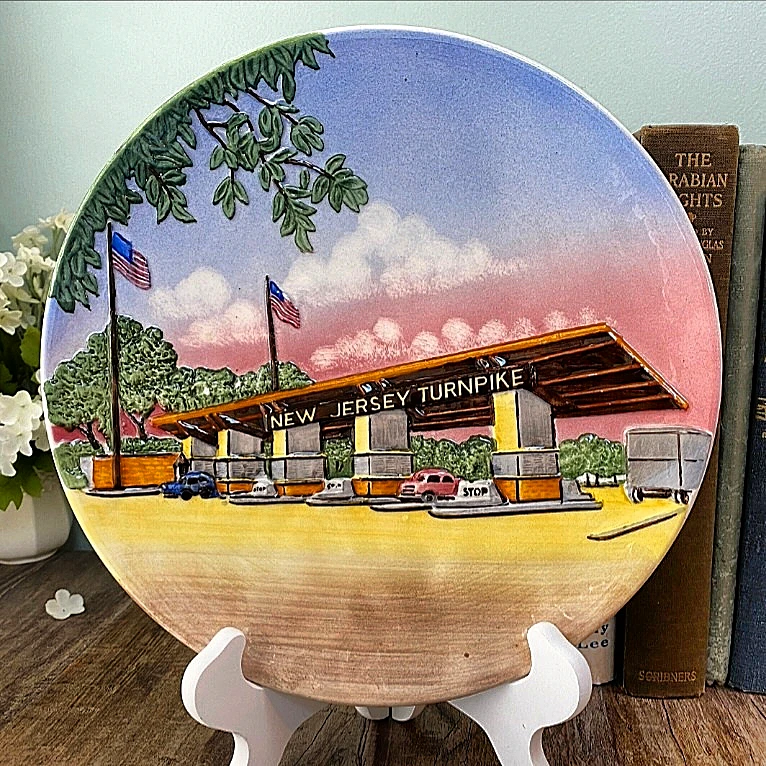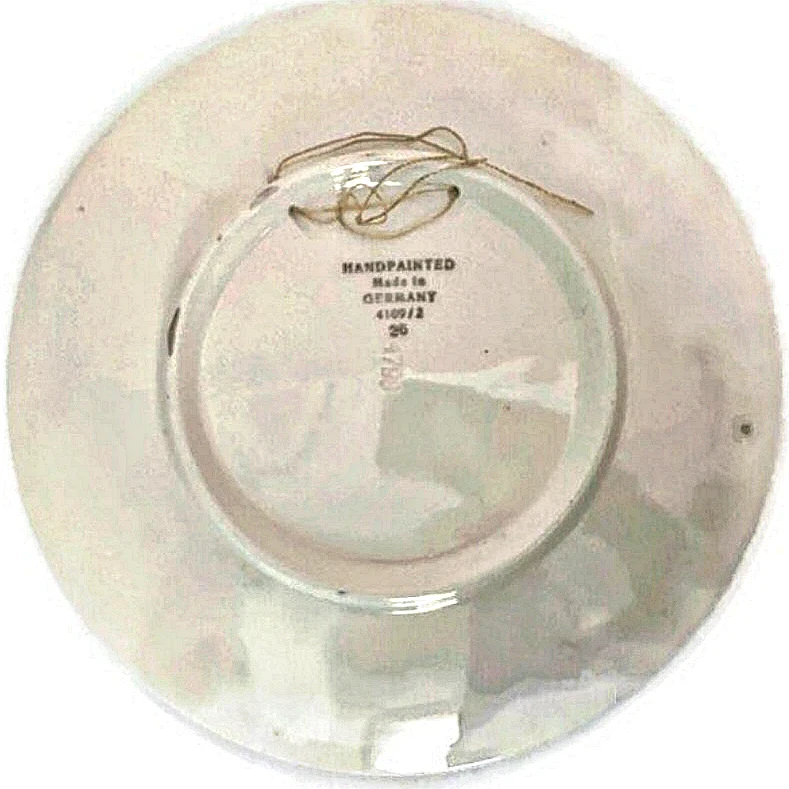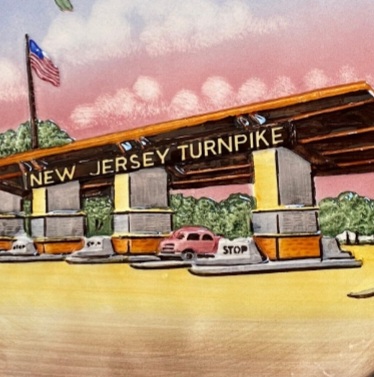The Autobahn, Jersey Style
- DesignShed Org
- Jul 17, 2022
- 4 min read
Updated: Jun 11, 2023
Co-founder Petia Morozov serves up a plateful of unlikely connections between the Autobahn and the NJ Turnpike, in the “World of Tomorrow.”
A rare, vintage New Jersey Turnpike Souvenir Plate. The hand-painted ceramic plate is marked "Made in Germany." Courtesy of Petia Morozov.
Recently, editor and Co-founder Petia Morozov came across a rare vintage souvenir from Germany that brings to light at least one unlikely connection with New Jersey's much beloved and reviled Turnpike. Could it possibly be that the Turnpike was "Made in Germany" in more ways than one? Morozov digs deep to discover how the 1939's World Fair was a critical piece of the Turnpike's propaganda puzzle.
The New Jersey Turnpike may have turned many heads at the 1939 World's Fair, but Germany’s concept of a high-speed super road was well underway.
Planning for Germany’s inter-city highway network began in the mid-1920s, with a Cologne-Bonn road opened in 1932. It wasn't until the Nazis came to power in 1933 that planning gained momentum. The Nazi party initially opposed a highway network on the grounds that it would primarily benefit wealthy aristocrats who could afford a car. Adolf Hitler embraced the propaganda value of individual mobility – a nation-wide road network and the affordable "people's car," aka Volkswagen, to populate it – and the project became the world's first high-speed road network.
Hitler appointed Fritz Todt as "Inspector General of German Road Construction," and tasking him with increasing the Autobahn network. Todt was behind a jobs creation program which, according to Nazi propaganda, helped eradicate unemployment in Germany. Autobahn workers lived in work camps near their construction sites, though often did not come here voluntarily. They were conscripted through the compulsory Reich Labor Service, artificially reducing the unemployment registry.

The early days of the Autobahn: Frankfurt to Mannheim in 1935. Fox Photos/Hulton Archive/Getty Images
The true results of that motorway expansion were meager, however, and construction increasingly relied on forced workers and concentration camp inmates after war broke out in 1939. By 1942, only 2,360 miles out of a planned 12,430 miles of freeway had been completed.
Meanwhile, the 1939 World’s Fair in New York sparked stateside euphoria, spreading propaganda that managed to convert European failures in modernity into America’s ingenuity in good old fashioned patriotic progress. Though the decades prior to its grand opening were unstable, Fair organizers wanted to keep the plaguing problems of World War I and the Great Depression firmly in the past. The World’s Fair was supposed to look toward the future –“the World of Tomorrow” – and all the promises that science, technology, democracy and collective effort could bring. During the Fair’s run, a second Great War began, totalitarian regimes gained strength throughout Europe, and entire nations were wiped off the map. World War II’s vast destruction made it difficult for Fairgoers to even imagine a future could come.
But one future was already brewing before everyone’s eyes. Over the course of three presidencies, Roosevelt, Truman and Eisenhower pushed to create a superhighway system that doubled as a network for national defense, by enacting several highway defense bills. The World’s Fair even featured a model of a future highway system – looking remarkably similar to New Jersey’s geography – that would come to fruition with the National Interstate and Defense Highways Act (1956). Taken together, these massive campaigns swayed the Department of Defense to fund the construction of the Turnpike in relatively short order.
Following Germany's defeat in 1945, the road network that would soon be known as the Bundesautobahn (Federal Highway) was in bad shape. Many sections were never completed, others were damaged by Allied bombs, and several bridges had been destroyed by the retreating German army. Ironically, the autobahns in Germany proved more useful for Allied military forces than for their domestic forces.
One highway system emerges out of totalitarian rule, promising equality and ultimately delivering speed and performance cars. The other emerges out of American freedom, promising speed and ultimately delivering traffic and truck accidents.
Unlike the New Jersey Turnpike, the Autobahn is financed by taxes and maintained by the German state itself and not the regions it crosses.
Like the Turnpike, Autobahn drivers have free access, but since 2005, driver need to pay a "maut" (toll). The Autobahn also has its own police force, the Autobahnpolizei, often using unmarked police cars equipped with video cameras to document speed violations.
Unlike the Turnpike, politicians and the public in Germany are undecided on the future of the famous Autobahn. Leading the charge for more motorways is Germany's highly controversial transport minister Andreas Scheuer. She recently tweeted, "If you live in a village, you need the Autobahn!", which drew the ire of many people living in rural areas who would actually prefer better public transport.
Like the Turnpike, demand to stop Autobahn expansion projects is on the rise due to climate change, including the A49 in Hesse, which would mean destroying a 300-year-old, 2,500-acre forest.
While the future of these two iconic super highways may be uncertain, their places in history are assured, and interconnected. If the theme for the next World's Fair in 2025 is any indication, we will be “Designing Future Society for Our Lives!”
Booth, Please is our weekly newsletter that explores the dreams, discoveries, confrontations, and epiphanies that emerge when design meets New Jersey — all set within the comforts of the world's diner capital. Subscribe below and cozy up every Sunday.













コメント